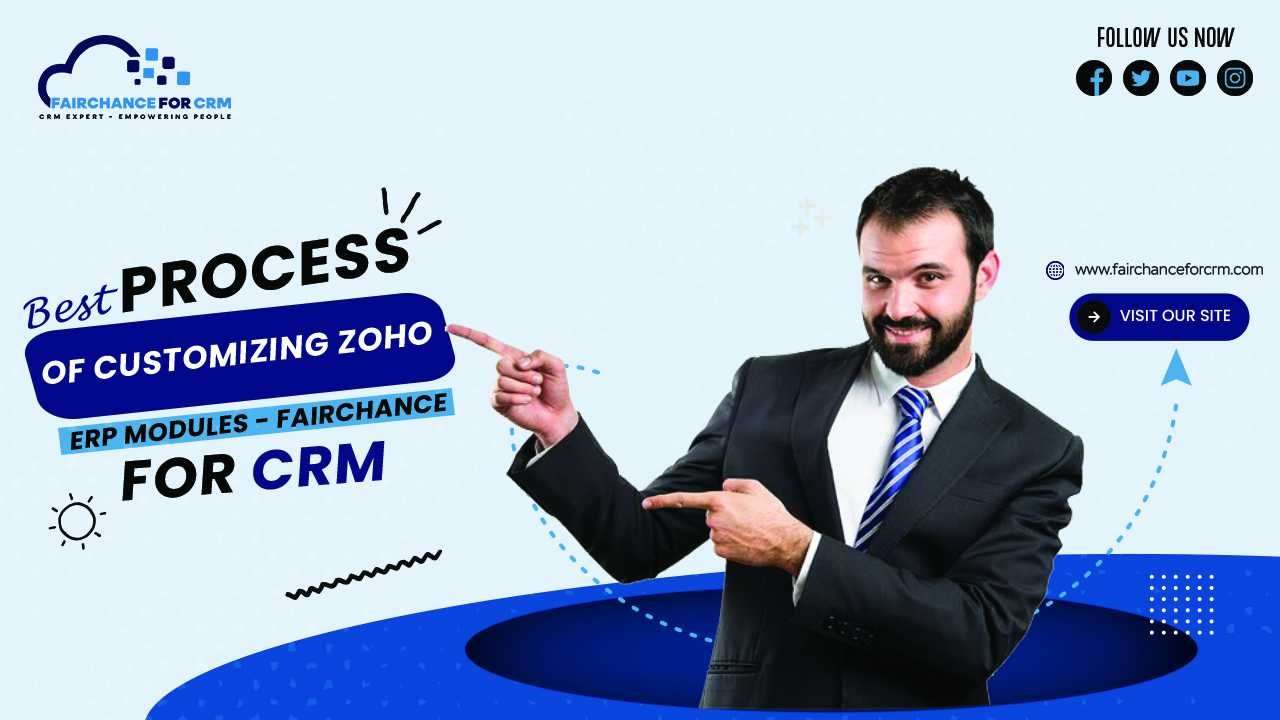Every business requires a boost and flexible ERP (Enterprise Resource Planning) to enhance productivity, drive growth, and streamline operations. Zoho ERP is one of the best platforms providing solutions with different modules to manage different business functions effectively.
Customizing Zoho ERP Modules is one of the most important things to enhance a business. Customization is necessary for the system to work stream and fulfill the needs of the business. Here is the best process for customizing Zoho ERP modules; you will learn many things afterward.
Related Article:
- Zoho One Admin: A Guide to Managing Your Business
- Zoho Point of Sale: A Comprehensive Solution for Businesses
- Zoho Development Services: Powering Business Growth
- How to Deactivate Zoho Account: FAIRCHANCE FOR CRM
- Digital Transformation Through Zoho – Best Advanced Approach
Understanding Business Requirements
The first step in customizing Zoho ERP modules is understanding the business’s needs and requirements. The following are the important points related to customization.
- Stakeholder Consultation: This is used to engage with different stakeholders in the market, including department heads, end users, and IT Staff. It also gathers your business information about their requirements and expectations.
- Process Mapping: It documents the current business data and process and then identifies the areas where some improvements are required by the customizing process.
- Requirement Specification: It also defines the customization requirements, which include important functionalities and features needed in each Zoho ERP Module.
Planning and Strategy
When all the requirements are understood, the next step is to plan the customization process and how and in which way the work begins.
- Feasibility Analysis: This function asses the technical feasibility of the required customization within the Zoho ERP Environment, which makes the work easy and streamlined.
- Resource Allocation: This feature determines the resources needed for the customization; this step includes Human resources ( HR), time, and budget.
- Customization Roadmap: The Customization roadmap is very important, and this feature is used to develop a complete roadmap that outlines the customization tasks, timelines, milestones, and achievements.
Configuration and Development
After creating the roadmap, the next and most important customization begins. The following function is included in this process.
- Module Configuration: The features utilize the Zoho ERP built-in configuration choices to tailor the modules to meet the basic customization requirements.
- Custom Development: Use Zoho Creator or Zoho Deluge, Zoho’s scripting language, to create custom apps, processes, and connectors for sophisticated customizations. Zoho uses one of the greatest backend languages, Deluge.
- Integration: This feature ensures that current systems and third-party apps integrate seamlessly using Zoho’s APIs and integration tools. Zoho is one of the top tools for delivering ERP modules for greater customization.
Testing and Quality Assurance
Comprehensive testing, also known as quality assurance, is necessary before implementing the modifications to ensure they work as intended. Zoho ERP Modules offer the best solutions for this procedure.
- Unit Testing: This function tests individual components and functionalities to ensure they work correctly and smoothly.
- System Testing: This process checks and tests the system by coding end-to-end testing of the ERP system to verify that the modules and customizations work together smoothly.
- User Acceptance Testing (UAT): This process involves end-users in the testing process to verify and validate that the customizations meet their requirements and are user-friendly, increasing business development and growth quickly.
Deployment and Training
After testing, the customization can be deployed to a live environment; here, an environment means a server or a host.
- Deployment Planning: Schedule the deployment to lessen the disturbance to business operations for better growth. It’s advisable to deploy during off-peak hours or weekends, depending on the internet connection and the data size.
- User Training: As part of this procedure, end users will get thorough training sessions to acquaint them with the new features and functions. The deployment procedure requires that you follow these steps. Support documents and user guides are needed before deploying to the live system. All of this personalization falls within the modules of Zoho ERP.
- Change Management: Implement a change management strategy to help users adapt to the new system and processes, which will boost businesses and make work faster.
Post-Deployment Support and Maintenance
Customization is an ongoing process, and post-deployment support is essential to ensure the system continues to meet business needs.
- Continuous Monitoring: Every Zoho application requires continuous monitoring of the system for issues or performance bottlenecks and promptly addressing them.
- Regular Updates: Keep the system updated with the latest features and security patches from Zoho and ensure that all systems work properly and quickly.
- Feedback Loop: Establish a feedback loop with users to gather their input and make necessary adjustments or enhancements. If you need to improve something, apply the advanced feature using Zoho ERP Modules customization.
For more information about the Zoho ERP Modules, visit this link.
If you want to Free Trail Zoho, click on this link.




